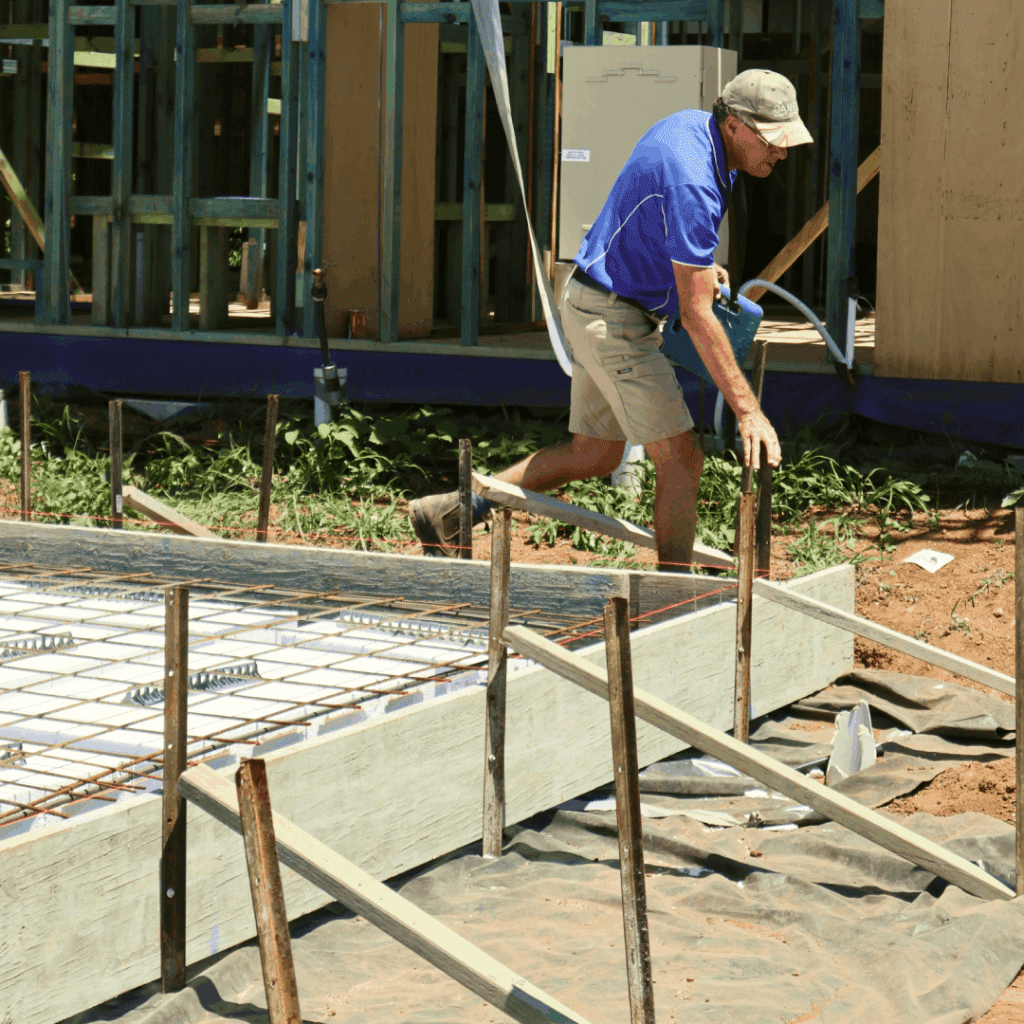Discover why seasoned builders consider foundation work the make-or-break factor in construction success – and how to avoid costly mistakes that could compromise your entire project.
Understanding the Critical Role of Foundations in Construction Success
For any builder in the UK, mastering foundation work isn’t just another skill – it’s an absolute necessity. Recent industry data shows that over 25% of structural failures in buildings are directly attributed to foundation problems, making it the single most critical element in construction. The foundation literally carries the weight of your entire project, and getting it wrong can lead to catastrophic consequences, both structurally and financially. In fact, statistics from the Royal Institution of Chartered Surveyors indicate that foundation repairs can cost anywhere from £5,000 to upwards of £50,000, depending on the severity of the issue.
The Science Behind Property Foundations
Understanding the scientific principles behind foundations is crucial for any builder. The key lies in comprehending how different soil types interact with building loads and environmental conditions. In the UK’s varied geological landscape, builders must contend with everything from London Clay to Yorkshire limestone. Recent geological surveys indicate that 40% of UK properties are built on shrinkable clay soils, which can significantly impact foundation design and stability. The interplay between soil composition, water content, and structural loads creates a complex equation that every builder must master to ensure long-term stability.
Soil Analysis and Site Investigation
- Conduct detailed soil boring tests to determine soil composition and bearing capacity
- Perform moisture content analysis to assess soil stability
- Check historical land use records for potential contamination or previous structures
- Assess groundwater levels and seasonal variations
- Monitor surrounding structures for signs of settlement or movement
Foundation Types and Their Applications
Different building projects require specific foundation solutions. In the UK market, builders typically work with these primary foundation types:Strip foundations – Most common for residential properties, suitable for stable ground conditions;Raft foundations – Ideal for poor soil conditions or heavy structural loads;Pile foundations – Essential for tall buildings or very weak ground;Pad foundations – Perfect for smaller structures or point loads. The choice depends on factors including soil conditions, building design, and budget constraints.
Common Foundation Challenges and Solutions
Ground Stability Issues
UK builders frequently encounter stability challenges, with recent data showing that 30% of new construction projects require some form of ground improvement. Common issues include:
- Subsidence in areas with mining history
- Heave in clay-rich soils
- Landslip risks on sloping sites
- Organic soil compression
Water Management
Water management is crucial in the UK’s wet climate. Effective solutions include:
- Installation of French drains around foundations
- Proper grading and landscaping for surface water control
- High-quality damp proof courses and membranes
- Regular maintenance of drainage systems
Environmental Factors
Climate change has introduced new challenges for UK builders, with extreme weather events increasing by 40% in the past decade. Successful foundation work must account for these environmental pressures through careful planning and robust design solutions.
Foundation Design and Construction Best Practices
Planning and Documentation
Proper planning is essential for foundation success. Key elements include:
- Detailed structural calculations
- Building control approval documentation
- Site-specific risk assessments
- Construction method statements
- Material specifications and quality control procedures
Construction Techniques
Modern foundation construction demands precision and attention to detail. Essential steps include accurate setting out, proper concrete mixing ratios, and careful consideration of reinforcement placement. Studies show that 60% of foundation failures can be traced back to poor construction techniques rather than design issues.
Quality Control Measures
- Regular inspection of excavations before concrete placement
- Testing of concrete samples for strength compliance
- Monitoring of reinforcement positioning
- Documentation of all construction stages
- Independent verification of critical elements
Foundation Maintenance and Problem Prevention
Regular Inspection Guidelines
Preventative maintenance is crucial for long-term foundation health. Establish a regular inspection schedule that includes:
- Annual visual inspections for cracks or movement
- Quarterly checks of drainage systems
- Bi-annual assessment of surrounding ground conditions
- Regular monitoring of any existing repair work
Remedial Works
When problems arise, swift action is essential. Common remedial solutions include underpinning, grouting, and pile installation. Recent industry data indicates that early intervention can reduce repair costs by up to 70%.
Expert Tips for Long-term Foundation Success
Professional builders recommend these key strategies for foundation longevity:
- Always over-specify rather than under-specify foundation depth and strength
- Invest in comprehensive ground investigations before design
- Maintain detailed records of all foundation work
- Build in contingency for unexpected ground conditions
- Regular professional development to stay current with best practices
Conclusion: Building on Solid Ground
Mastering foundation work is non-negotiable for any serious builder in the UK construction industry. With foundation-related issues accounting for over £800 million in repair costs annually, the importance of getting it right cannot be overstated. By following the comprehensive guidelines outlined above, builders can ensure their projects start on solid ground and stand the test of time. Remember, in construction, success is built from the ground up – quite literally.
FAQ
What is the difference between a builder and a contractor?
The cost structure is also different between the two professionals. General contractors usually work on a fixed contract amount, meaning they set a price for the entire project upfront. The price usually includes materials, labor, and fee. On the other hand, custom home builders work on a cost-plus contract.
What is a builder’s mindset?
So what is builder mentality? It’s approaching life with a humble resolve for growth and development. It’s knowing that things can always be better, and striving for those improvements, while acknowledging the work that’s already been done and the foundations that have been laid.
What is a builder person?
noun. a person who builds, esp one who contracts for and supervises the construction or repair of buildings. a substance added to a soap or detergent as a filler or abrasive.
Is a builder an architect?
At the core, the jobs of these two professions, builder and architect, differ greatly. Architects deal in abstract aspects and the overall design vision for your home. Builders work with the details, the nuts and bolts of construction.
Sources
[1] https://refactoring.guru/design-patterns/builder
[2] https://www.builder.io
[3] https://www.builder.ai


Leave a Reply